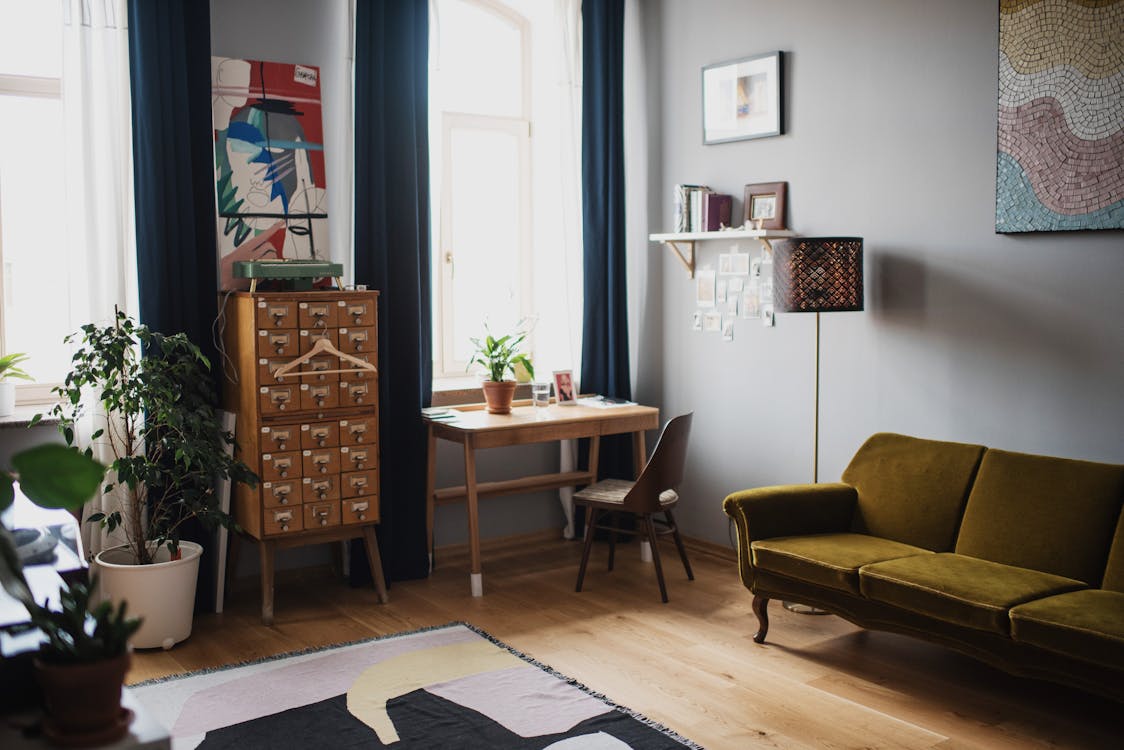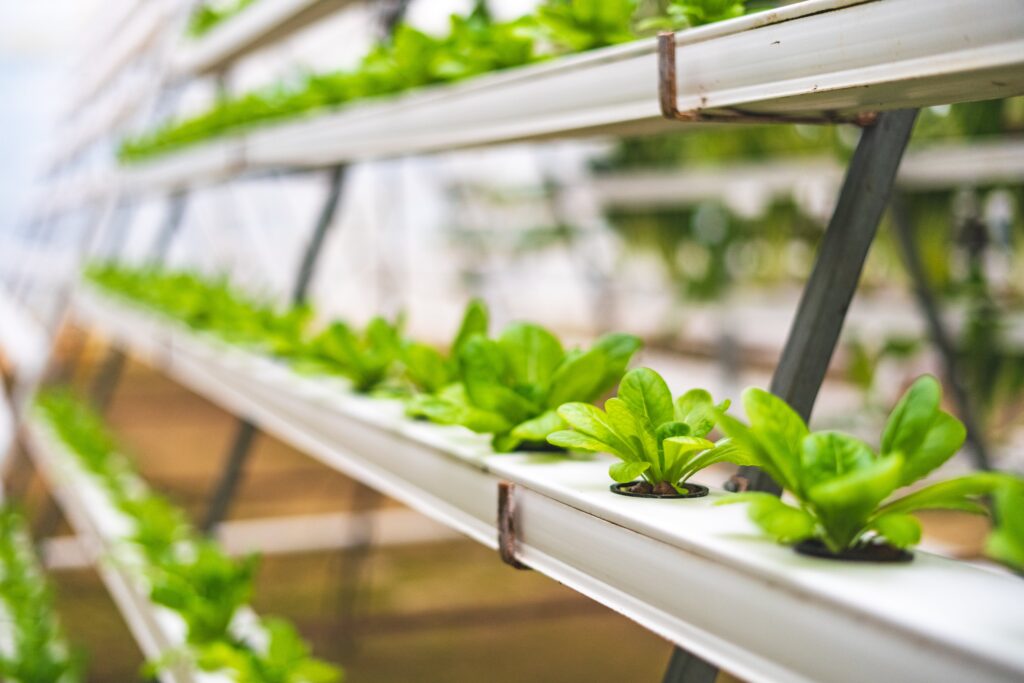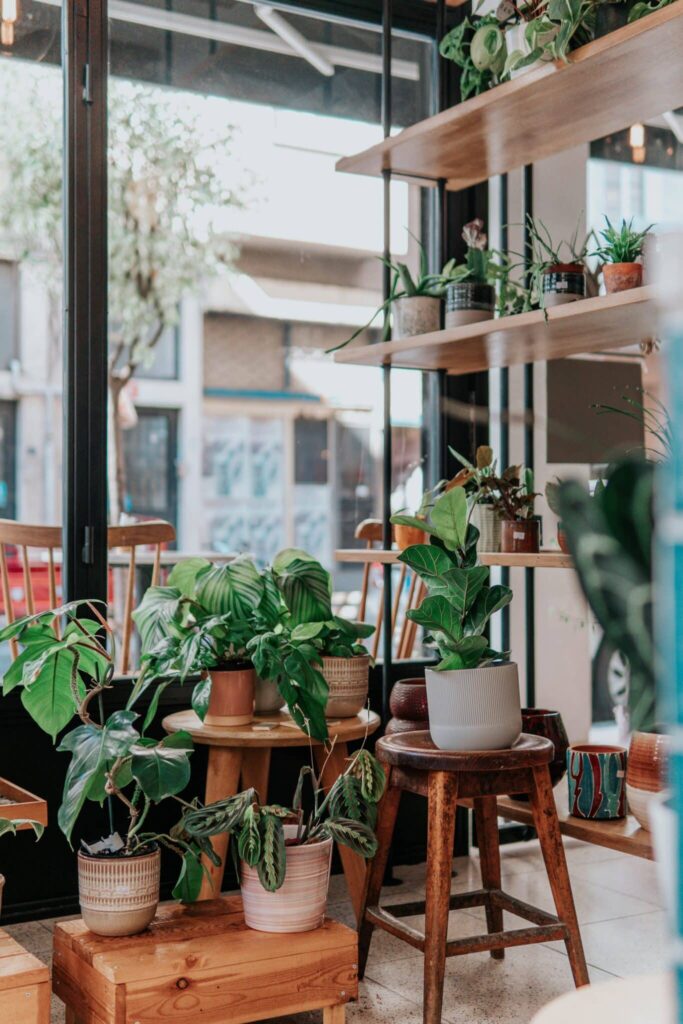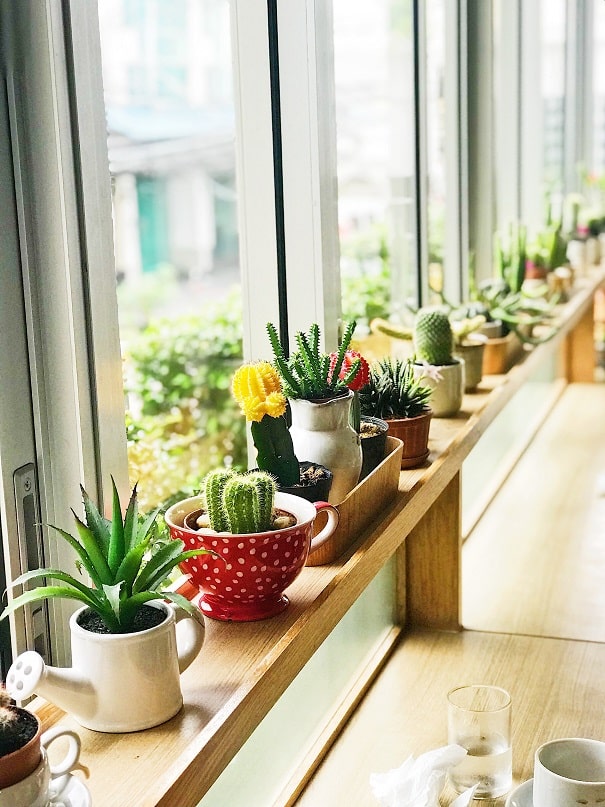Alright, listen up! If you’ve struggled to make indoor plants grow faster, you’re in luck. We have some expert tips to have those green beauties flourishing quickly.
Whether you’re a plant newbie or a seasoned gardener, these ten tips will help you create the perfect environment for your indoor plants to thrive. We’ve got you covered from adjusting the lighting and temperature to proper watering techniques and fertilizing. So grab your watering can and let those plants grow faster than ever!
Choosing the Right Plants
When it comes to keeping indoor plants, choosing the right varieties is crucial in ensuring their growth and overall health. Opting for fast-growing plant species can be smart, especially if you’re looking for quick results. Many plants have different growth rates, so it’s essential to consider this aspect before selecting. Some popular fast-growing indoor plants include pothos, spider plants, and philodendrons. These plants not only add a touch of vibrant greenery to your home but also thrive in indoor environments. So, invest your time in researching and selecting fast-growing plant varieties that suit your preferences and space.
In addition to selecting fast-growing varieties, considering environmental conditions is equally important. Different plants have different environmental preferences, such as light levels, humidity, and temperature. Before bringing a plant home, make sure you understand its specific requirements. Consider factors such as the amount of light available in your space, the average temperature, and the humidity levels. This knowledge will help you choose plants that can thrive in your specific indoor environment.
Providing Adequate Light
Now that you’ve chosen your indoor plants, it’s crucial to provide them with proper lighting conditions. Light plays a vital role in photosynthesis, allowing plants to convert sunlight into energy. Lack of adequate light can lead to stunted growth and weak plants. Here are two ways you can ensure your indoor plants receive enough light:

Place Plants Near Windows
One way to provide natural light to your plants is by placing them near windows. Depending on their location, windows allow plants to receive direct or indirect sunlight throughout the day. South-facing windows typically receive the most light, while north-facing windows receive the least. Observe the lighting conditions near different windows in your home and position your plants accordingly. Remember to rotate your plants occasionally to ensure even light distribution and prevent them from leaning towards the light too much.
Use Artificial Grow Lights
Artificial grow lights can be a great alternative if your home doesn’t receive adequate natural light. Grow lights are specially designed to mimic the full spectrum of sunlight, providing plants with the necessary light energy for photosynthesis. Choosing the right type and intensity according to your plant’s needs is essential when using grow lights. LED grow lights are energy-efficient and highly customizable, allowing you to adjust the color spectrum and intensity. Place the lights at an appropriate height above your plants and adjust the duration of light exposure according to the plant’s requirements.
Maintaining Optimal Temperature
Temperature is another crucial factor affecting indoor plants’ growth and overall health. While different plant species have varying temperature preferences, you can follow some general guidelines to maintain optimal plant conditions.
Avoid Extreme Temperature Fluctuations
Indoor plants generally prefer stable temperatures without significant fluctuations. Extreme temperature variations can stress the plants and hinder their growth. Avoid placing plants in areas where they are exposed to drafts, such as near doors or windows. Keep them away from heating vents or air conditioning units, as these can create hot or cold spots. Try to maintain a consistent temperature throughout your home, ideally between 65°F and 75°F (18°C to 24°C), to create a comfortable environment for your plants.
Use Supplementary Heating or Cooling
In cases where your home’s temperature doesn’t fall within the preferred range for your plants, you may need to provide supplementary heating or cooling. During colder months, consider using space heaters or heating mats to provide warmth to your plants. Be cautious with heating devices and ensure they are used safely to avoid any fire hazards. If you live in a hot climate or during summer months, air conditioning or fans can help regulate the temperature and keep your plants cool. Find the right balance to maintain an optimum temperature for your plants, and they will thank you with healthy growth.
Proper Watering Techniques
Watering indoor plants appropriately is crucial for their growth and survival. Both overwatering and underwatering can have detrimental effects on your plants. Follow these guidelines to ensure your plants receive the right amount of water:
Avoid Overwatering
Overwatering is a common mistake that many plant owners make. It can lead to root rot, nutrient deficiency, and even plant death. To avoid overwatering, check the moisture level in the soil before watering. Stick your finger about an inch into the soil, and if it feels dry, it’s time to water. If the soil feels moist, waiting before watering again is best. Remember, it’s better to underwater than to overwater, as most indoor plants can tolerate slight drying out between watering sessions.
Ensure Proper Drainage
Good drainage is essential for healthy plant growth. When you water your plants, ensure the excess water can easily drain out of the pot. Choose pots with drainage holes at the bottom, allowing water to escape and prevent waterlogged soil. If your pots don’t have drainage holes, consider adding a layer of gravel or small rocks at the bottom to create space for water to collect without saturating the roots. proper drainage ensures that the roots do not become waterlogged, which can lead to root rot and other issues.
Use Watering Techniques
When it comes to watering, it’s essential to use proper techniques. Instead of pouring water directly onto the plant’s leaves, aim to water directly onto the soil. This prevents water from sitting on the leaves, which can lead to fungal diseases and other problems. Water the soil until excess water drains out of the bottom of the pot, ensuring the roots receive adequate moisture. Consider using a watering can with a narrow spout to control the flow and avoid splashing water onto the plant leaves. Also, ensure the water temperature is close to room temperature, as extreme temperature differences can shock the plant’s roots.
Implementing a Regular Fertilizing Schedule
To ensure optimal growth, indoor plants require regular feeding with appropriate nutrients. While healthy soil can provide some nutrients, indoor plants often need additional fertilizing to thrive. Here are some tips to help you effectively fertilize your plants:

Choose the Right Fertilizer
There are numerous fertilizers available in the market, each designed to cater to specific needs. Read the labels carefully and select a fertilizer that matches the requirements of your particular plants. Different fertilizer formulations have varying nutrient ratios, such as nitrogen (N), phosphorus (P), and potassium (K). Nitrogen promotes leaf growth, phosphorus encourages root development, and potassium enhances overall plant health. Consider using balanced fertilizers or those formulated for indoor plants to ensure a well-rounded nutrient supply.
Apply Fertilizer in Correct Proportions
It’s crucial to apply fertilizers in the correct proportions to avoid overfeeding or nutrient deficiencies. The product packaging should provide instructions on the recommended amount of fertilizer to use for each plant. Follow these instructions carefully, as excessive fertilization can lead to burned roots or tip burn on leaves. If you are unsure, it’s better to use less fertilizer rather than more, as it’s easier to correct an underfed plant than an overfed one. Remember that each plant has different needs, so it’s essential to adjust the fertilizer application according to their specific requirements.
Follow Fertilizer Manufacturer’s Instructions
In addition to using the correct proportions, it’s important to follow the manufacturer’s instructions for fertilizing frequency. Fertilizer application schedules vary depending on the brand and formulation. Some fertilizers may need to be applied every two weeks, while others may require monthly or quarterly feeding. Over-fertilization can harm your plants and cause nutrient imbalances, so it’s vital to adhere to the recommended feeding intervals. Stay consistent with your fertilizing routine to provide a steady supply of nutrients and promote healthy growth in your indoor plants.
Monitor Plant Nutrient Needs
Keep an eye on your plants’ overall health and appearance to gauge their nutrient requirements. Nutrient deficiencies often manifest as yellowing or discolored leaves, stunted growth, or leaf drop. If you notice any signs of nutrient deficiencies, consider adjusting your fertilizing schedule or switching to a fertilizer with a more suitable nutrient composition. Regular monitoring and observation will help you identify and address any nutrient imbalances promptly, ensuring your plants receive the nutrients they need for optimal growth.
Pruning and Trimming
Pruning and trimming play a crucial role in maintaining the health and appearance of indoor plants. Removing dead or overgrown foliage can encourage new growth and help your plants thrive. Here are some key pruning and trimming practices to follow:
Remove Dead or Dying Foliage
Dead or dying foliage can be unsightly and may indicate underlying issues such as disease or pest infestations. To keep your plants healthy and aesthetically pleasing, regularly remove any dead or dying leaves. Gently snip them off at the base using clean pruning shears or scissors. Removing dead foliage not only improves the plant’s appearance but also prevents the spread of diseases or pests to healthy parts of the plant.
Trim Overgrown Branches
As plants grow, they may develop overgrown branches or stems that can hinder their overall growth and shape. Trimming these branches helps maintain a balanced and compact form. When trimming, identify the nodes or junctures where new leaves or branches emerge, and cut just above these points. Use sterile pruning tools to prevent the spread of diseases, and ensure the blades are sharp for clean cuts. Regular trimming will encourage branching and create a fuller and more visually appealing plant.
Encourage New Growth by Pruning
Pruning can also be used to encourage new growth in indoor plants. By selectively removing certain stems or branches, you can redirect the plant’s energy towards areas that need stimulation. To encourage new growth, identify areas where you want the plant to fill out or become more bushy. Make your cuts just above a leaf node or branching point to stimulate new growth. Regular pruning and shaping will help your plants maintain their desired form and promote healthy development.
Enhancing Humidity Levels
Humidity levels can significantly impact the growth and well-being of indoor plants. Many houseplants originate from tropical regions with high humidity, so reproducing these conditions can be beneficial. Here are a few methods to enhance humidity levels for your indoor plants:

Group Plants Together
Grouping plants together can create a microenvironment with higher humidity levels. As plants transpire, they release moisture into the air, creating a localized humid atmosphere. Placing plants in close proximity to one another allows them to benefit from each other’s moisture release. Be mindful of the plants’ individual requirements and group those with similar humidity preferences together to achieve the best results.
Use Humidity Trays
Humidity trays can be another effective way to increase moisture levels around your plants. These trays are shallow containers filled with water and placed beneath the pots. As the water evaporates, it increases the humidity around the plants. Ensure that the pots are elevated above the water level to prevent waterlogging and root damage. Regularly monitor the water level in the trays and refill as needed to maintain the desired humidity.
Mist Plants Regularly
Misting your plants with water can provide instant moisture and elevate humidity levels. Fill a spray bottle with room temperature water and mist the leaves of your plants. Focus on the undersides of the leaves, as this is where most of the water absorption occurs. Misting can also help remove dust and keep the foliage clean, enabling better photosynthesis. However, avoid misting plants with fuzzy or hairy leaves, such as African violets, as they are susceptible to fungal diseases.
Promoting Air Circulation
Proper air circulation is important for the overall health of your indoor plants. Good airflow prevents the buildup of stagnant air, reduces the risk of disease, and strengthens the plants’ stems and roots. Here are some methods to promote air circulation:
Avoid Overcrowding
Plants that are placed too closely together can impede air circulation and create an environment prone to mold and fungal growth. Allow enough space between plants for air to flow freely. The individual space requirements vary depending on the plant species, so research each plant’s preferences and arrange them accordingly. Additionally, periodically prune back any overgrown branches to maintain adequate airflow and prevent overcrowding.
Use Fans or Open Windows
Using fans or opening windows can significantly improve air circulation in your indoor space. Set up table or floor fans near your plants to create a gentle breeze. The movement of the air helps strengthen the plant stems and encourages transpiration, which aids in the uptake of nutrients. If weather permits, open windows to allow fresh air to enter your home and replace stale air. Cross ventilation can help remove stagnant air and promote a healthy environment for your plants.
Rotate Plants
Rotating your plants periodically is an effective way to ensure even exposure to light and promote uniform growth. By rotating your plant’s position, you can prevent them from leaning towards a single light source and encourage symmetrical growth. Additionally, rotating allows different sides of the plant to receive airflow, preventing issues such as leaf burn and mold growth. Aim to rotate your plants every few weeks or as needed to maintain balanced growth and airflow.
Monitoring and Controlling Pests
Pests can pose a significant threat to the health and growth of your indoor plants. Regular inspection and timely action are crucial to prevent pest infestations from getting out of control. Here’s how you can monitor and control pests effectively:
Inspect Plants Regularly
Make it a habit to inspect your plants regularly for signs of pests. Look for pests such as aphids, mealybugs, spider mites, or scale insects on the leaves, stems, and undersides of foliage. Check for any visible damage, discoloration, or pests’ presence, such as webs or droppings. Early detection helps prevent pests from spreading and causing significant damage. Act promptly if you notice any signs of pests, even if it’s just a few individuals.
Remove Pests Manually
If you spot pests on your plants, remove them manually before using chemical solutions. Use a soft cloth or a cotton swab dipped in rubbing alcohol to gently wipe off the pests from the affected areas. For larger insects like caterpillars, you can pick them off by hand. It’s important to be thorough during removal to prevent any remaining pests from regrouping and multiplying. Repeat the process consistently until the plant is free of pests.
Use Organic Pest Control Methods
If manual removal is not sufficient, consider using organic pest control methods. There are various natural solutions available that can effectively control pests without harming your plants or the environment. Neem oil, insecticidal soaps, and horticultural oils are examples of organic pest control products. Follow the instructions on the product packaging carefully, as improper use can damage your plants or be less effective against pests. Organic pest control methods offer a safe and environmentally friendly way to keep indoor plants pest-free.
Replenishing Soil and Repotting

Over time, the soil in your plant’s pot can become depleted of nutrients and compacted, affecting the plant’s growth. Replenishing the soil periodically and repotting when necessary is essential for the long-term health of your indoor plants. Here’s what you need to know:
Replace Soil Every Few Years
As plants grow, they consume nutrients from the soil, gradually depleting its fertility. Replacing the soil every few years helps replenish the nutrient content and maintain a healthy growing medium. When replacing the soil, gently remove the plant from its pot and shake off excess soil from the roots. Fill the pot with fresh potting mix, ensuring it’s suitable for the specific plant species. Transplant the plant into the new soil, ensuring it sits at the same depth as before. Water thoroughly to settle the soil and start your indoor plant fresh.
Repot When Necessary
As your plants grow, they may outgrow their current pots, leading to root crowding and hindering growth. It’s important to repot your plants into larger containers when necessary. Signs that your plant needs repotting include roots poking out of drainage holes, slow growth, or yellowing leaves despite proper care. When repotting, select a pot one or two sizes larger than the current one, providing enough room for the roots to grow. Loosening the roots gently before repotting can encourage new growth and prevent root-bound conditions.
Choose the Right Pot Size
Choosing the right pot size is crucial for the growth and health of your indoor plants. The pot size should be proportionate to the plant’s size and growth rate. A pot that is too small can restrict root growth, while a pot that is too large can cause excess soil moisture and stagnant conditions. As a general rule, select a pot that allows around an inch or two of space on all sides for the plant to grow comfortably. Pots with drainage holes are essential to prevent waterlogging and promote healthy root development.
Following these tips and implementing the recommended practices ensures your indoor plants grow faster and thrive in their environment. Remember that each plant has unique needs, and paying attention to their individual requirements is essential. With proper care and attention, your indoor plants will reward you with lush foliage, vibrant blooms, and a refreshing ambiance in your home. So, start your plant care journey and watch your green space flourish!




